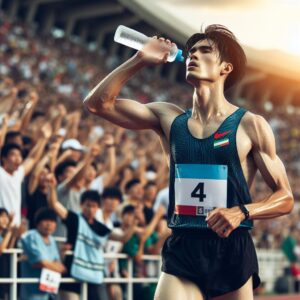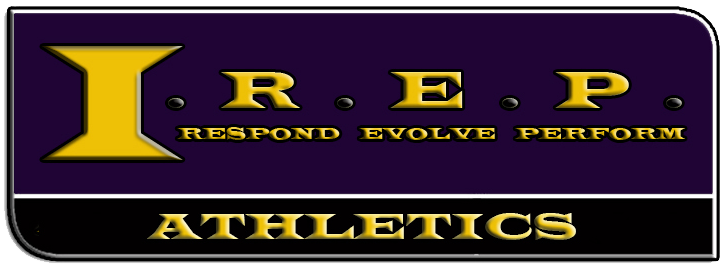Pre-Race Nutrition
The purpose of this carbohydrate loading is to maximize the storage of glycogen—your body’s primary fuel source during prolonged exercise—within your muscles. You should focus on increasing your intake of carbohydrates several days before the event. Around 70-80% of your calories should come from carbohydrates during this period. Sources such as pasta, rice, bread, cereals, fruits, and starchy vegetables are excellent choices.
You should focus on consuming adequate fluids to ensure you are well-hydrated before the start of the race. Dehydration can impair your performance and increase the risk of heat-related illnesses. Drinking fluids steadily throughout the days leading up to the race is wise, making a particular effort to include beverages that offer electrolytes, important minerals that support nerve function and muscle contraction.
The final pre-race meal is the last fuel you will provide your body before the event begins. This meal is typically consumed 2-4 hours before the race commences. It should be high in carbohydrates, moderate in protein, low in fat, and low in fiber to facilitate digestion and minimize gastrointestinal disturbances. Suitable meal choices include oatmeal with a drizzle of honey, a bagel with a small amount of peanut butter, or a bowl of white rice with a plain omelet. It should be something you’ve tried and tested during training sessions. Familiarity with how your body responds to this meal is vital, ensuring that there are no negative reactions that could impact your performance.
In the final minutes leading up to the race, top off your hydration levels with a small drink, preferably a sports beverage to add a last-minute boost of electrolytes. This should not be a large volume of liquid, but just enough to ensure you feel hydrated, but not bloated or uncomfortably full.
Nutrition During the Swim
Taking in electrolytes before the swim can fortify the body’s mineral balance as it embarks on the race. A well-balanced electrolyte drink consumed pre-swim can help achieve this.
During the swim, the body draws energy from the carbohydrate stores that have been accumulated from the pre-race meal and glycogen loading in the days leading up to the race. The efficient use of these energy reserves is important, and while swimming, the body primarily relies on the slow and steady release of energy from these stores.
The key nutrition strategy during the swim is conservation. It involves maintaining a consistent technique and tempo that optimizes energy efficiency. The smoother and more efficient the swim stroke, the less energy you will expend, meaning the body can conserve those precious carbohydrate stores for the subsequent stages of the race.
Bike Segment Fueling
Immediately upon mounting the bicycle, it is wise to begin the fueling process. The athlete should start with water to settle the stomach after the swim and then alternate between water and an electrolyte-rich sports drink to balance fluid and electrolyte intake.
As cycling is less jarring on the digestive system than running, the bike segment is the most opportune time to consume the majority of caloric intake needed during the race. Athletes should aim for a consistent intake of carbohydrates, aiming for around 60-90 grams per hour, depending on their size, the intensity of their effort, and their own metabolic efficiency. Easily digestible forms are preferable, such as energy gels, chews, and sports drinks that enable a steady influx of carbohydrates.
Using solid food items such as energy bars can be effective during the bike segment, but they should be chosen carefully. The focus should stay on carbohydrates, but these foods can also provide a mix of proteins and fats for a more prolonged energy release, which may be beneficial during the later parts of the bike stage.
A disciplined schedule should be followed, with the athlete taking small sips every 10 to 15 minutes rather than consuming large volumes infrequently. This helps to mitigate gastrointestinal discomfort and enhances hydration absorption. Athletes must adjust fluid intake based on temperature, humidity, and their personal sweat rate, which should have been estimated during training.
It’s important to remain cognizant of gauging effort to ensure ingested fuel is properly utilized and absorbed. A steady pace serves the dual purpose of allowing the body to digest and absorb nutrients effectively, as well as conserving energy for the demands of the run stage that follows.
Run Segment Fueling
During the transfer from cycling to running, the body must quickly adapt to the change in pace and energy demands. It is advantageous at this stage to consume a quick source of carbohydrates and fluids to give an immediate energy boost. An energy gel or sports drink consumed right as you begin the run can set a positive tone for the entire segment.
 Staying hydrated on the run is necessary. Depending on the race conditions and personal sweat rates, the athlete will need to adjust their intake. Dehydration can lead to a significant drop in performance and increase the risk of heat exhaustion, particularly in warmer climates. Drink stations are commonly placed at regular intervals on the course, and athletes should take advantage of these, even if it’s just for small sips of water or electrolyte drinks.
Staying hydrated on the run is necessary. Depending on the race conditions and personal sweat rates, the athlete will need to adjust their intake. Dehydration can lead to a significant drop in performance and increase the risk of heat exhaustion, particularly in warmer climates. Drink stations are commonly placed at regular intervals on the course, and athletes should take advantage of these, even if it’s just for small sips of water or electrolyte drinks.
Due to the high-impact nature of running and the potential for gastrointestinal distress, many athletes find solid foods difficult to consume during the run. Energy gels, chews, or even liquid carbohydrate solutions can be more easily tolerated. Athletes should look to consume 30-60 grams of carbohydrates per hour to support energy needs. These should be taken in small, regular doses, spread across the duration of the run.
Utilizing electrolyte supplements, such as chews or capsules, can be particularly helpful in preventing cramping and maintaining muscle and neural function. The runner needs to balance these with fluid intake to ensure proper hydration and electrolyte levels.
Consuming calories during the run requires a fine-tuned approach. The body may not signal hunger due to the intensity of the activity, but energy demands remain high. By breaking down consumption into regular intervals—every 20 minutes or by mile markers on the course—the athlete can set a consistent rhythm for energy intake, correlating with the pacing and milestone achievements.
As the athlete approaches the final kilometers of the run, they should focus on maintaining a steady intake of liquids and energy. The objective is to stay hydrated and fueled but to avoid overconsumption that could cause discomfort or slowing down when hitting the finish line is of the essence.
Post-Race Recovery Nutrition
In the minutes following the race, your body is in a state that is highly receptive to replenishment. Glycogen synthesis is most efficient within the first 30 to 60 minutes post-exercise. It is recommended to consume a mix of carbohydrates and protein soon after finishing. An ideal ratio is 3:1 carbohydrates to protein, which could look like a recovery shake that includes fruit, carbohydrates, and protein powder. This provides quick-digesting nutrients that jumpstart the muscle repair process.
Hydration is the immediate concern following a long race. A sports drink can help restore electrolyte balance, or water accompanied by salty food can also help replace sodium and other lost electrolytes. Rehydrating should continue to be a focus in the hours and days following the race.
For ongoing recovery and to mitigate muscle soreness, continue to consume a balanced diet rich in nutrients. Your post-race meals should include a mix of carbohydrates, lean proteins, healthy fats, and vegetables which provide a variety of vitamins and antioxidants that can help address inflammation and facilitate recovery. Meals like grilled chicken breast with sweet potatoes and a side of leafy greens or a salmon fillet with brown rice and broccoli can offer a balanced, nutritious recovery meal.
Proteins are the building blocks of muscle repair, so it’s important to include high-quality protein sources in your post-race diet. Fish, chicken, tofu, legumes, and quinoa are examples that can support muscle recovery. Consuming small to moderate amounts of protein at regular intervals can provide a consistent supply of amino acids to assist in repairing tissue damage.
Maintain a nutrient-rich diet to continue supporting the recovery process. Your body will still benefit from an intake of complex carbohydrates and lean proteins, paired with fats that can help with inflammation, such as omega-3 fatty acids found in fish, nuts, and seeds. Include plenty of fruits and vegetables for their phytonutrients and antioxidants, which can further support the body’s recovery mechanisms.
Some athletes may experience a suppressed appetite immediately after such extensive exercise, so it is necessary to listen to your body. If solid foods don’t appeal to you right away, opt for smoothies or sports recovery drinks until you can resume normal meals without discomfort.
To aid the body in processing your post-race nutrition effectively, you should try to relax as much as possible. Resting will allow your body to focus on repairing muscles and tissues affected by the endurance event.
